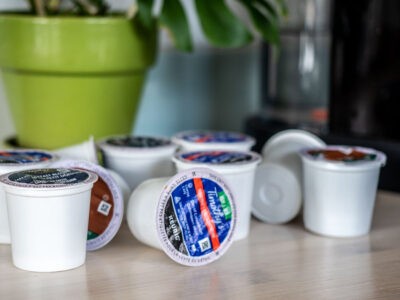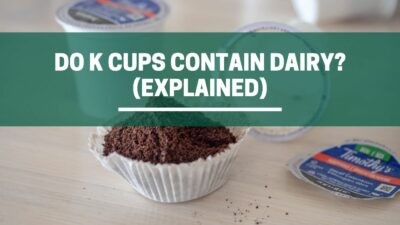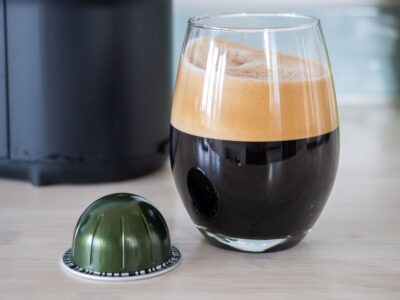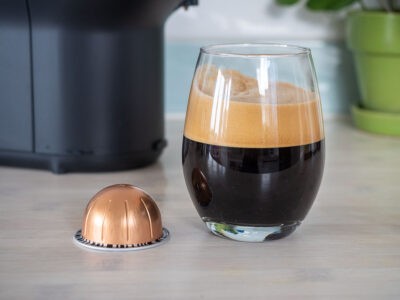Dolce Gusto Guides
How Much Power Does A Dolce Gusto Coffee Machine Use
An expense that is often ignored is the cost of electricity needed to run your appliance. Fortunately, Dolce Gusto coffee machines have been designed to only heat up water when it’s needed which makes them incredibly electrically efficient.
Your Dolce Gusto machine only draws a lot of power when it’s first turned on (to heat the water from room temperature) and when you run the extraction (bringing new cold water into the boiler).
If we look at the Dolce Gusto Genio 2 for example, it takes 40 seconds to heat up and then will take around 30-40 seconds to extract your coffee. Its built-in energy saver mode will then automatically shut down the machine 5 minutes later.
The Dolce Gusto Genio 2 is rated to use 1460W of electricity. Making 4 cups of coffee each day, we can estimate an annual power consumption of around 42kWh. At a power price of $0.25/kWh, the cost of electricity to run your Nespresso machine is around $10 a year.
Note: The machine will continue to use around 40W while plugged in and turned off, so it may be prudent to switch the machine off at the wall when not in use!
Why Listen To Us? Well, because we KNOW coffee! In fact, we make our own coffee, coffee machine cleaners, and reusable capsules which we've sold to over 41 countries. Our team ouf experts include Tristan (an engineer), Claire (a food writer) and Richy (a barista). So, whether you're looking for a recipe or repair guide, we've got you covered 💚
Table of Contents
What components in a Dolce Gusto Machine draw the most power?
There are 2 main components in a Dolce Gusto machine that draw a lot of power. These are;
- The Heating element – This is the term Nespresso use to describing the heating unit. It’s basically an electric element encased in a block of aluminium and copper pipework. The standard Thermoblock is rated at 1400W. The Thermoblock is energized immediately when the machine is turned on, to heat the water inside to 95degrees Celsius. It will then cycle on an off to maintain that temperature.
- The water pump – The pump Is only used when you extract a coffee. For an espresso shot this will run for about 30 seconds, and for an americano it will run for a little over a minute.
Fortunately, regardless of the exterior, the heating element component is the same across all Dolce Gusto machines. This means the figures quoted below will be a reasonable approximation to follow regardless of the particular Dolce Gusto machine you are using.
How many Watts of power does a Dolce Gusto machine use?
The next question is to figure out how much power various makes and models of Dolce Gusto machine use. We’ve looked at the datasheets for most of the common models and tabulated the power ratings in the table below.
It’s important to note that this figure is the ‘rated input power’ – which basically means it’s the worst-case power that the machine can be expected to draw.
| Dolce Gusto Model | Rated Power Consumption |
| Esperta 2 | 1460W |
| Genio S | 1500W |
| Genio S Automatic | 1500W |
| Genio S Touch | 1500W |
| Genio S Plus | 1500W |
| Genio 2 | 1460W |
| Majesto | 1460W |
| Infinissima | 1500W |
| Piccolo XS | 1500W |
In reality, it will draw this for a very short amount of time while heating up, and then idle using much less power.
What does the electricity usage of a dolce gusto machine look like?
We tested 3 different Dolce Gusto machines using a plug-in energy meter to see how much power they user during each phase of their operation. Interestingly, the figures we recorded are all roughly the same, suggesting the internal componentry doesn’t differ much between models.
Note: We’re based in New Zealand and the testing was done using 230V AC mains. These numbers may be slightly different for places that use 110V, or 240V mains.
We’ve broken the usage down into the following four processes and measured how much each of these use.
- Heat up – This is when you first switch on your machine and the element kicks into to heat your room temperature water. We found this consumed roughly 1350W.
- Dispensing – during dispensing the heating is on and so is the high pressure pump. This drew a total of 1450W through the duration of the coffee extraction.
- Idle on – The machine uses about 40 – 50 Watts while idling.
- Off / Standby – When switched off we found our machines still consumed about 40 Watts. This was quite alarming as that’s about the same energy as a modern energy safe lightbulb!
How much will I spend on electricity each year running my Nespresso machine?
This is hard to estimate as it depends on a lot of factors, namely how much you pay per kilowatt-hour of electricity, and how often you use your Nespresso machine throughout the day.
- The price of electricity – around the world the price we pay for electricity can vary immensely. Here in New Zealand, a figure of around 20c/kWhr is a fair assumption.
| Location around the world | Average Power Prices ($USD/kW-hr) | Annual cost of making 4 coffees each day |
| Auckland | $0.19 | $7.90 |
| London | $0.20 | $8.30 |
| New York | $0.21 | $8.70 |
| Sydney | $0.26 | $10.80 |
| Vancouver | $0.14 | $5.80 |
- The number of coffees made each day – Obviously the more often you run your machine, the more power you’ll consume.
| Number of coffee’s made each day | Approximate annual power cost |
| 1 | $2.50 |
| 2 | $5 |
| 4 | $10 |
| 8 | $20 |
It’s worth noting that these machines use far less power than simply heating up the kettle for a cup of tea or instant coffee, so if you’re comparing to that it may actually save you money!
Our tips to reduce your Dolce Gusto energy usage
- Beat the energy-saving mode. When sitting id;e after making a cup of coffee, the machine will cylce the element on and off to maintain temperature in the water reserviour. This will happen 5 or 6 times before the energy-saver mode will turn the machine off after 5 minutes. So, if you don’t plan to make another brew, be sure to switch off the machine at the wall immediately.
- Switch off at the wall.
Always turn off your Dolce Gusto machine at the wall, as our tests show them using as much as 25W when plugged in put turned off at the machine.
Final thoughts
Dolce Gusto machines have been designed to be extremely energy efficient. They only heat the water they need, and will automatically shut down after a short period of inactivity.
Even though you may end up spending around $10 a year on electricity to run your machine, this is negligible compared to the $1300 the average household spends on capsules.
Also, when compared to boiling an electric kettle, which is the most common alternative method of making coffee, the Dolce Gusto machine will use less than half the electricity.






